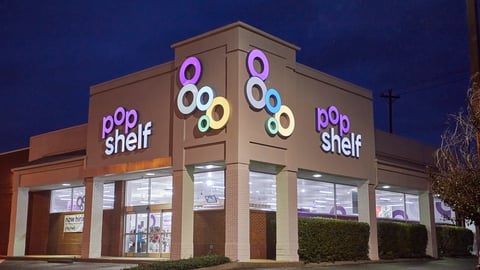Augmented reality opens up new opportunities for retail innovation
One of the many ways life has changed since the start of the COVID-19 pandemic is how people shop.
Stay-at-home orders accelerated the trend towards online shopping, with more than half of U.S. adults shopping more online. While the pandemic's negative impacts challenged many retailers, the trend towards personalized, immersive customer experiences spurred examples of beauty and fashion brands such as L’Oreal and Pandora turning to augmented reality (AR) as a novel way to help their customers try on cosmetics, jewelry or apparel.
In the space of a year, the concept of using AR technology to merge an e-commerce customer experience with what they might feel in a physical store has gone mainstream. And consumers like it. In a recent study by thinkmobiles.com, 71% of shoppers said they would shop more often if they could use AR, while 40% would consider paying more if they could examine a product through AR.
However, AR's valuable use cases also now stretch much deeper into the operations of retailers. Innovation with AR-enabled smartphone devices and self-scanning apps has only just started. By integrating these in to a retailer’s operations and processes, employees can gain real-time access to essential product information, and inventory data through AR overlays.
Here's a brief rundown on a few specific use cases where AR technology could be a real game-changer for retail enterprises and to improve customer experience.
AR can provide crucial product and inventory management information at a glance
Checking products and stock information can be a significant pain point for retail employees. This is where a smart-scanning app with AR comes into its own. A simple sweep of the phone over the shelf can reveal key information via the AR overlay. Offers and coupons are quick to update centrally allowing staff manage in-store marketing efficiently and react more quickly to what is happening in the aisle.
For shoppers, the necessity to pick up a product and check the nutritional information (such as sugar-free or low-fat items) can be a chore for some. The ability to use the AR overlay to see unique product characteristics such as reviews, ratings, specifications, discounts, and coupons; empowering shoppers to make more informed purchasing decisions, quickly and without hassle. And in the ongoing crisis, people want to be touching items as little as possible.
Price verification and item location
Retail employees can use smart devices with AR to efficiently correct price errors and rearrange incorrectly placed products. Store staff can quickly compare product data with actual price labels. These digital retail solutions will overlay the accurate pricing information on the screen with an AR display, ensuring accuracy.
With a barcode scanning-enabled mobile app, employees can quickly and easily locate items based on predefined criteria. This functionality is invaluable for Click & Collect services, where an employee scans the barcode from the customer’s receipt and then locates the right order via “search and find” in the stock room.
In-store order picking
Retail staff can use AR technology to quickly and seamlessly find the correct products for shoppers with a single touch on their smartphones. This enables pickers to find the right customer items much more rapidly from a crowded assortment of products.
Shipping & receiving
Using smartphones enabled with AR software, warehouse staff can instantly identify and collect orders through one comprehensive app. This provides for a more efficient shipping and receiving effort. These intuitive retail management solutions require no training to implement rapidly across brick-and-mortar retail teams. Moreover, they generate a fraction of the total cost of ownership (TCO) of traditional scanning hardware.
Stock-taking & inventory management
Using in-app AR, retail employees can capture the barcodes of multiple items with one scan. They can then see real-time stock information on the device screen. This type of efficiency improvement drives up productivity and reduces the costs involved in managing store inventory.
Besides the efficiencies to the store operations, adding AR to a self-scanning mobile app can provide a competitive advantage and boost the bottom line by empowering customer-facing employees to provide a more personalized and immersive experience to shoppers. This opens up an even broader swathe of use cases for which the surface has only just been scratched.
Samuel Mueller is CEO and co-founder at Scandit.











